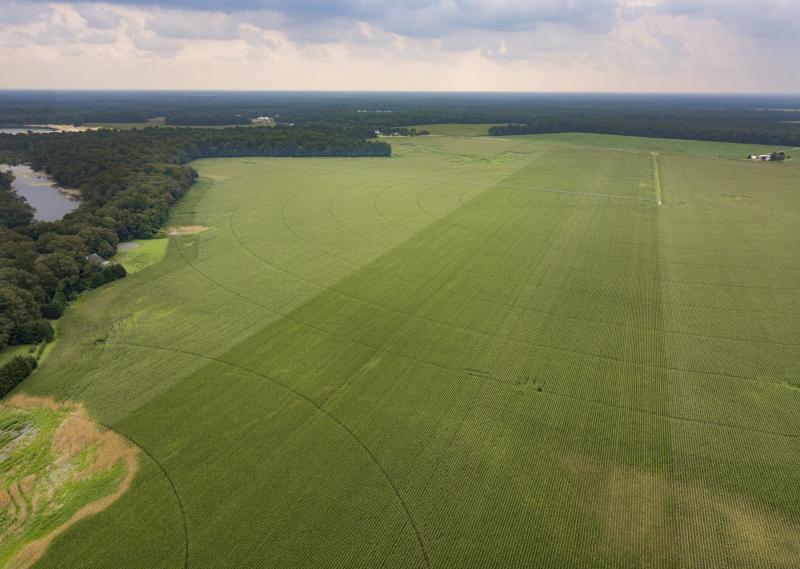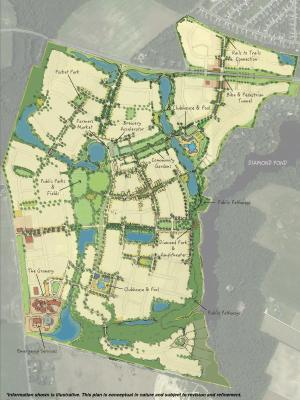Milton council finalizes list for first tranche of Granary funds
Milton Town Council finalized its list Feb. 5 of potential uses for the first tranche of funds to come from the sale of bonds associated with the Granary at Draper Farm development.
The first bit of money raised by the Granary’s special development district designation will be $500,000, said Town Manager Kristy Rogers. She said the town can match that $500,000, giving it $1 million for projects.
Council and town staff have been at this since July, when a rough draft of the list was created. That list included solar-powered street lights, a bathroom in Memorial Park, enhancing bicycle and pedestrian connections, a new police headquarters, a water meter replacement program and street repairs.
At the Feb. 5 meeting, new items added to the list included a public basketball court, a pedestrian connection to the McCabe Nature Preserve and a multiuse path to connect Heritage Creek to the town’s sidewalk network.
Councilman Scotty Edler suggested the town use some of the funds to help retire some of its debt related to water infrastructure projects.
“I think it would be fiscally responsible to not only create projects, but also try to retire some of this debt,” he said.
Councilman Tom Arkinson said he would like to see the town pursue the water meter replacement plan, in which homes with inside water meters will have to get those meters moved to an outdoor pit.
Vice Mayor Lee Revis-Plank said she would like to see the town figure out a way to hedge against price increases from Delmarva Power, such as a solar farm on town-owned land.
Mayor John Collier said the list will be submitted to the third-party administrator of the special development district for approval on what would be funded and what wouldn’t. From there, the council would be able to move forward with funding the projects.
The Granary at Draper Farms is proposed as a 1,350-unit development on a 450-acre parcel on Sand Hill Road. The build-out is scheduled to take place over 20 years in 10 sections, with the first section already having received preliminary site-plan approval from the planning and zoning commission. The development will be mainly residential, but some small commercial development is planned. Phase 1 of the project has already received preliminary site-plan approval and is expected to break ground later this year. Phase 1 of the Granary is planned for the northwest corner of the property off Sand Hill Road and would include 175 units.
A special development district is a special tax levy to be paid by Granary residents only. The town would agree to issue special obligation bonds – bonds that officials from developer Convergence Communities say are backed by Granary residents, not the town – up to $42 million. The proceeds from that tax will be put into a special fund to be used to fund public infrastructure improvements within and potentially outside Granary.
The special tax does not preclude Convergence from paying town-required performance bonds, which set aside money to ensure roads and other infrastructure are completed.
The developer would use that money to pay for infrastructure projects benefiting the public, which could include streets, sidewalks, and parks and recreation facilities. Convergence has pledged to make up to 55 acres of the parcel into public open space, create a biking and walking trail connecting to the town’s Rails to Trails, and install an amphitheater for public use within the development.
Convergence has agreed to give the town up to $5 million from proceeds raised by the special development district to use on other infrastructure projects. However, that money comes with strings attached. First, only projects built inside Granary that benefit its residents will be covered 100%. Projects outside the development or located within but benefiting people outside the development would be covered on a 60/40 basis, Rogers said, with the Granary funds covering 40 percent and the town covering remaining costs.
The town has three years to spend the money or it reverts back to Convergence.
Ryan Mavity covers Milton and the court system. He is married to Rachel Swick Mavity and has two kids, Alex and Jane. Ryan started with the Cape Gazette all the way back in February 2007, previously covering the City of Rehoboth Beach. A native of Easton, Md. and graduate of Towson University, Ryan enjoys watching the Baltimore Ravens, Washington Capitals and Baltimore Orioles in his spare time.
























































